Carrier Management reached out to leaders of property/casualty insurance organizations, asking them to respond to questions about innovation. Here we present eight responses to our second question:
Q2: Describe the greatest innovation at your company during your tenure. (It could be a product, process or service.) How did it come about? (Feel free to describe more than one.)
- Q1: The greatest innovation in the P/C insurance industry
- Q2: Describe the greatest innovation at your company
- Q3: Innovation or innovator outside the insurance industry
- Q4: How your company encourages innovation
- Q5: The biggest obstacle to innovation within the insurance industry?
- Q6: The next innovation to impact the P/C insurance industry
- Q7: Your role in leading innovation.
- Q8: Best book you have read about innovation
- Q9: Describe a failed initiative at your company
- Q10: Collaborating with market competitors
- Q11: Can P/C insurers disrupt other industries?
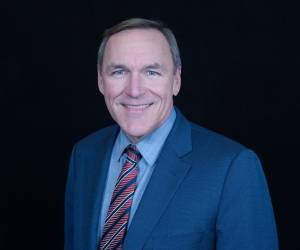
Galanski (Navigators): The greatest innovation at Navigators over the last decade has been marrying our proprietary and home-grown management information capabilities with mobile technology.
Today, our underwriters and claims professionals can access amazingly detailed management information on the performance of their books of business from an iPad. Combining industry-leading access to data with mobility has been a winning combination.
Hendrick (XL Catlin): There have been quite a few. In 2011, XL launched an internal Innovation competition called Competition 25 to commemorate the company’s 25th anniversary. A new product called CapAssure was the top winner. CapAssure protects large, private construction owners from the risk of default by general contractors and protects general contractors from the risk of default by subcontractors. By bringing together our surety and subcontractor default underwriting capabilities, we developed a very flexible insurance product to address performance risk securitization. (Editor’s Note: A March 2012 media statement about CapAssure explains that the product provides an alternative to letters of credit and other capital requirements. It also eliminates coverage redundancies and gives project owners more control in a default scenario to directly manage project completion.)
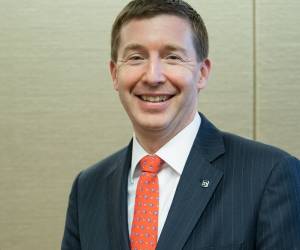
In 2012, we established a Zurich-based Complex Accounts team whose directive was to design custom-built risk solutions for innovative companies, which are often pushing the boundaries themselves and have found that standard insurance coverage has not met their needs. One of their solutions, specifically designed for Bloom Energy of Sunnyvale, Calif., was a performance warranty insurance product. The product enabled Bloom Energy to finance the installation of dozens of Bloom Energy Servers. These systems are expected to generate over 50 million kilowatt hours of clean, reliable electricity, and the insurance policy assures the performance of Bloom’s fuel cell server technology over the term of the financing. After this success and a few others, we expanded this team, establishing underwriting capabilities in our London office. We think our Complex Accounts business model is a real differentiator for us.(See related article, “Innovation in Bloom at XL Catlin,” for more details.)
One of our most recent innovations was developed by our North America Construction team and has already received some industry recognition. Called P3 Plus, this is a creative approach to managing the design, construction, and operational and maintenance phases of the risks associated with public-private partnerships (aka P3s), an innovative team approach for public entities and private companies to work together to accomplish much-needed construction of roads, bridges and other essential infrastructure.

Lupica (ACE): Clients and brokers continually ask us to make their lives easier, and ACE Worldview, which is now celebrating its fifth anniversary, came about from this. The online insurance program management platform (available to large commercial insureds with complex property/casualty insurance programs) allows users to track the issuance of a local multinational policy, electronically sign coverage selection forms, view billing online and access claims predictive analytics.
Moreover, in 2014, our clients challenged us to keep our company flat and nimble, and we responded with our Worldview Communities. These communities are a virtual underwriting and servicing portal and will bring together all the experts at ACE, with the broker and client, to collaborate and provide superior service.
ACE Worldview has changed the way risk managers and their teams approach their complex, global insurance programs. Even five years after its launch, no other carrier offers anything like Worldview.

Lightfoot (Guy Carpenter): I’ve been at Guy Carpenter for over 15 years, so I have seen quite a bit of innovation. One of our greatest innovations was and continues to be MetaRisk. It was the first broadly used dynamic financial analysis tool in the industry and brought actuarial science methodology to reinsurance pricing optimization and then to capital management. Since its initial release over 20 years ago, it has created a fundamental shift in companies’ understanding of risk and enabled them to use that understanding to drive better business decisions.
A more recent example of an innovative initiative strongly resonating with our clients is our Model Suitability Analysis (MSA) initiative. MSA is a rigorous and transparent catastrophe model evaluation framework, providing our clients with increased confidence in the catastrophe model results.
Watson (Argo): The contribution I am most proud of is our business strategy and our people. It’s our secret sauce.
As a company, we’ve always maintained a long-term view—the backbone to securing the future for our customers, business partners and employees. In doing so, we employ a formidable dose of selectivity when making decisions on the risks we underwrite, regions we plant new flags in and investments we make.
This strategy also extends across the business in the companies we acquire, talent we hire, and the products and services we deliver to the marketplace. During the past decade, it has helped us grow our capital from a few hundred million to more than $2 billion and more than triple shareholder value. It has enabled us to transform from a workers compensation provider to one of the leading global underwriters of specialty insurance and reinsurance.
Kelley (Ironshore): Innovation is the foundation of the Ironshore culture. Helping our clients adjust to change is integral in how we evolve as a company, providing coverage solutions throughout Ironshore’s global distribution platform.
We view change as very positive. Change triggers product enhancement and allows us to engage in new ways with our clients, brokers and policyholders.
Profound progress during my tenure at Ironshore has been that the management and employees throughout the organization enthusiastically embrace innovation. It’s in our corporate DNA, so to speak. New product design is embedded in our mindset and drives how we view and respond to the market.
(Editor’s Note: Among the recent examples of innovative product offerings introduced by Ironshore is standalone crisis coverage for construction risks and an endorsement on excess policies of health care facilities for emerging infectious disease business interruption coverage.)
McGavick (XL Catlin): There have been many, particularly in the risk product space. At the moment, one of the most exciting initiatives is the creation of XL Innovate—an XL-sponsored venture capital fund we think has enormous potential. Through this initiative, we’ll look partner with entrepreneurs who have the vision and ambition to address new risks with new solutions, unconstrained by geography, scale or traditional thinking.
I’m excited to have Tom Hutton, a past director of XL, leading XL Innovate. Tom brings extensive insurance-specific knowledge, both as an executive with experience in risk analytics, as CEO of Risk Management Solutions Inc., White Mountains Re, and as a director of private and public insurance and reinsurance companies including Montpelier Re and Safeco.
Most recently, Tom served as the CEO and founder of New Energy Risk Inc., a provider of innovative data analytics, strategic consulting and financial risk transfer solutions to the renewable energy industry worldwide. XL partnered with New Energy last year to launch an innovative fuel cell insurance product. That’s where XL Innovate will make its mark—facilitating collaborative partnerships that deliver first-of-its-kind insurance products.

Lee (AIR Worldwide): Without a moment’s hesitation, I would say Touchstone. Touchstone is not a single application; it is actually an open risk management environment that is highly modular, with components both upstream and downstream of the core catastrophe loss analytics. Upstream components include the ability to assess and improve the quality of exposure data, perform account underwriting and exposure management, and assess both cat and noncat loss potential. Downstream components include portfolio management at the business-unit level and the ability to roll up everything to the enterprise level. There are also powerful geospatial tools that enable stakeholders to visualize and analyze their risk from a portfolio view down to a single address.
Underpinning Touchstone is its open platform design. The openness allows you to incorporate data and models from other modeling firms, including those created by your own company. On the flip side, the rich set of API’s [application programming interfaces] allow you to integrate Touchstone into your existing software systems.
Clients have described Touchstone as a revolutionary risk management platform. The first version of Touchstone was released in 2013. We are on the cusp of releasing version 3.0, which will offer access to third-party models and the ability to burst to the cloud during periods of peak activity. Touchstone 3.0 goes even further in leveraging the resources of our parent company Verisk Analytics. Touchstone is engineered to empower today’s risk managers, and it has terrific momentum across all market segments.
Read more Innovation Insights by Question:
- Q1: The greatest innovation in the P/C insurance industry
- Q2: Describe the greatest innovation at your company
- Q3: Innovation or innovator outside the insurance industry
- Q4: How your company encourages innovation
- Q5: The biggest obstacle to innovation within the insurance industry?
- Q6: The next innovation to impact the P/C insurance industry
- Q7: Your role in leading innovation.
- Q8: Best book you have read about innovation
- Q9: Describe a failed initiative at your company
- Q10: Collaborating with market competitors
- Q11: Can P/C insurers disrupt other industries?
Read more Innovation Insights by Person:
 Stanley A. Galanski, President and CEO, The Navigators Group, Inc.
Stanley A. Galanski, President and CEO, The Navigators Group, Inc. Mark E. Watson III, President and Chief Executive Officer, Argo Group International Holdings, Ltd.
Mark E. Watson III, President and Chief Executive Officer, Argo Group International Holdings, Ltd.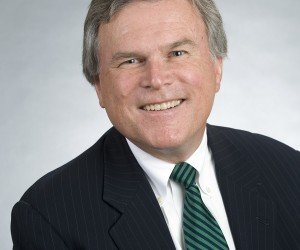 Kevin H. Kelley, Chief Executive Officer, Ironshore Inc.
Kevin H. Kelley, Chief Executive Officer, Ironshore Inc. John Wurzler, President, OneBeacon Technology Insurance
John Wurzler, President, OneBeacon Technology Insurance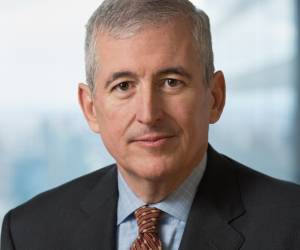 Alan B. Colberg, President and Chief Executive Officer, Assurant, Inc.
Alan B. Colberg, President and Chief Executive Officer, Assurant, Inc. Manny Rios, President and CEO, American Modern Insurance Group
Manny Rios, President and CEO, American Modern Insurance Group Dave Pratt, General Manager, Usage-Based Insurance, Progressive
Dave Pratt, General Manager, Usage-Based Insurance, Progressive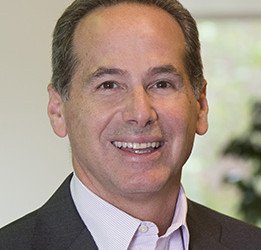 Berto Sciolla, EVP and Manager of North American Treaty Reinsurance,Gen Re
Berto Sciolla, EVP and Manager of North American Treaty Reinsurance,Gen Re Greg Hendrick, Chief Executive, Insurance, XL Catlin
Greg Hendrick, Chief Executive, Insurance, XL Catlin Anand Rao, Principal, PwC U.S. Advisory Practice
Anand Rao, Principal, PwC U.S. Advisory Practice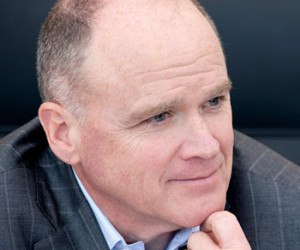 Mike McGavick, Chief Executive Officer, XL Catlin
Mike McGavick, Chief Executive Officer, XL Catlin David M. Lightfoot, Managing Director, Head of GC Analytics – Americas, Guy Carpenter
David M. Lightfoot, Managing Director, Head of GC Analytics – Americas, Guy Carpenter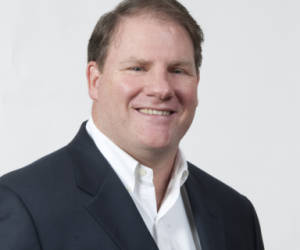 Conan Ward, Chief Executive Officer, Hamilton USA
Conan Ward, Chief Executive Officer, Hamilton USA Ming Lee, Chief Executive Officer, AIR Worldwide
Ming Lee, Chief Executive Officer, AIR Worldwide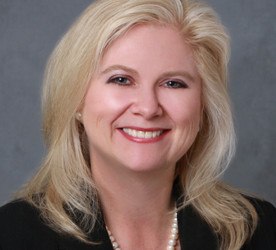 Laura Hay, National Insurance Sector Leader, KPMG LLP
Laura Hay, National Insurance Sector Leader, KPMG LLP John Lupica, Vice Chairman, ACE Group; Chairman, Insurance–North America
John Lupica, Vice Chairman, ACE Group; Chairman, Insurance–North America
Get all 16 interview neatly packaged in a single PDF download. Explore ideas by personality and by question. More than 60 pages of content.





















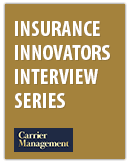
 Insurance Industry Contemplates Knock-On Effect of Tariffs to Claims, Consumers
Insurance Industry Contemplates Knock-On Effect of Tariffs to Claims, Consumers  Is State Farm General a Sinking Ship? California Emergency Rate Request Dropped to 17%
Is State Farm General a Sinking Ship? California Emergency Rate Request Dropped to 17%  The Workplace Is Changing; So Are the Risks for Employment Discrimination Claims
The Workplace Is Changing; So Are the Risks for Employment Discrimination Claims  The Future of the Insurance Customer Experience Is Unity, Personalization
The Future of the Insurance Customer Experience Is Unity, Personalization 
